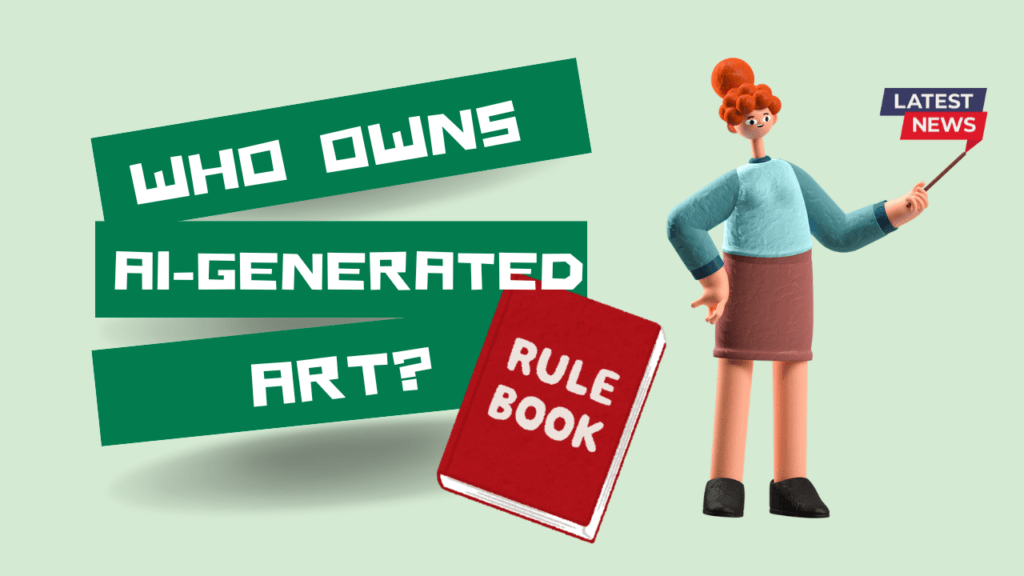Introduction
As artificial intelligence (AI) continues to reshape the creative landscape, the question of ownership regarding AI-generated art has become increasingly relevant. Who holds the rights to these artworks—the creators of the algorithms, the users inputting the prompts, or the AI itself? This article delves into the intricacies of ownership surrounding AI-generated art, the current legal landscape, and the implications for artists and consumers in the United States.
Table of Contents
Understanding AI-Generated Art
What is AI-Generated Art?
AI-generated art refers to artwork created with the assistance of artificial intelligence algorithms. These systems analyze large datasets, learn from various artistic styles, and generate original pieces based on user inputs. Artists can use AI tools to enhance their creativity, experiment with new styles, or produce art faster.
The Role of AI in Art Creation
AI plays a vital role in art creation by providing artists with tools that expand their creative capabilities. Artists can use AI to generate ideas, explore new styles, and produce artwork that might be challenging to create manually. However, this collaboration raises questions about authorship and ownership.
If you understand who owns the AI generated Art then You know about How to Create Ai Generated Images.
Legal Framework Surrounding AI-Generated Art
Copyright Laws in the U.S.
In the United States, copyright law protects original works of authorship. However, the law does not explicitly address AI-generated works, leading to ambiguity regarding ownership rights. Traditionally, copyright protection applies to works created by human authors. This raises critical questions about whether AI-generated art qualifies for copyright protection.
Ownership by Human Creators
Currently, most legal interpretations suggest that ownership of AI-generated art lies with the human creator who initiated the process. This means that the person who inputs the prompts or selects the AI parameters may hold the copyright to the resulting artwork. However, this interpretation is still evolving, and future legal decisions may change the landscape.
You can also read the How to Sell AI generated ART.
Who Owns AI Technology?
The Role of AI Developers
The developers and companies behind AI algorithms also have a stake in the ownership discussion. They create the tools that generate art, and their terms of service often outline the ownership rights associated with the generated works. For instance, some platforms may retain certain rights to the artworks created using their technology, which can affect the artists’ ownership claims.
Licensing Agreements
When using AI tools, artists may encounter licensing agreements that dictate the ownership rights associated with the generated art. Understanding these agreements is crucial for artists to know what rights they retain and what rights may be relinquished to the platform or developers.
The Implications for Artists and Consumers
Navigating Ownership Conflicts
As AI-generated art continues to grow in popularity, artists must navigate potential ownership conflicts. This includes understanding the terms of the AI platforms they use and ensuring they retain rights to their creations. Legal disputes could arise if multiple parties claim ownership of a single piece of art.
Consumer Considerations
For consumers purchasing AI-generated art, understanding ownership implications is equally important. Buyers should be aware of the rights associated with the artworks they acquire, including whether they can reproduce, sell, or display the art without restrictions. Transparent communication from sellers regarding ownership rights can enhance consumer confidence.
Future of Ownership in AI-Generated Art
Evolving Legal Landscape
As AI technology continues to advance, the legal framework surrounding ownership rights is likely to evolve. Legislators and legal scholars are increasingly discussing how to address the complexities of AI-generated works. Future regulations may clarify the ownership of AI-generated art and establish guidelines for artists and developers.
Ethical Considerations
The ethical implications of AI-generated art ownership cannot be overlooked. Discussions around the fair treatment of artists, the rights of AI developers, and the impact on the art community are crucial in shaping future policies. Establishing ethical guidelines can help protect the interests of all parties involved in AI-generated art.
Conclusion
The question of who owns AI-generated art is complex and multifaceted, involving various stakeholders, including artists, AI developers, and consumers. As the legal landscape evolves, artists must navigate the intricacies of ownership rights and licensing agreements to protect their creations. By understanding these dynamics, artists can better position themselves in the rapidly changing world of AI-generated art.
FAQs.
2. What should I consider before using AI art tools?
Before using AI art tools, review the terms of service and licensing agreements to understand ownership rights and any restrictions.
3. Is AI-generated art considered original?
Yes, AI-generated art can be considered original if it is created through unique algorithms and user inputs.
